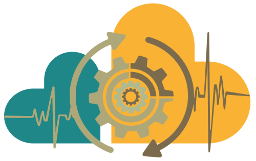Workflows
What is a Workflow?Filters
Secondary metabolite biosynthetic gene cluster (SMBGC) Annotation using Neural Networks Trained on Interpro Signatures
Scaffolding with Bionano
Scaffolding using Bionano optical map data
Inputs
- Bionano data [cmap]
- Estimated genome size [txt]
- Phased assembly generated by Hifiasm [gfa1]
Outputs
- Scaffolds
- Non-scaffolded contigs
- QC: Assembly statistics
- QC: Nx plot
- QC: Size plot
RiboSnake: 16S rRNA analysis workflow with QIIME2 and Snakemake
Qiime2 workflow for 16S analysis created with snakemake.
Authors
- Ann-Kathrin Dörr (@AKBrueggemann)
Usage
If you use this workflow in a paper, don't forget to give credits to the authors ...
Name: Random Forest Contact Person: [email protected] Access Level: public License Agreement: Apache2 Platform: COMPSs Machine: MareNostrum4 This is an example of Random Forest algorithm from dislib. To show the usage, the code generates a synthetical input matrix. The results are printed by screen. This application used dislib-0.9.0
Name: GridSearchCV Contact Person: [email protected] Access Level: public License Agreement: Apache2 Platform: COMPSs Machine: MareNostrum5
GridSearch of kNN algorithm for the iris.csv dataset (https://gist.githubusercontent.com/netj/8836201/raw/6f9306ad21398ea43cba4f7d537619d0e07d5ae3/iris.csv). This application used dislib-0.9.0
Name: GridSearchCV Contact Person: [email protected] Access Level: public License Agreement: Apache2 Platform: COMPSs Machine: MareNostrum5
GridSearch of kNN algorithm for the iris.csv dataset (https://gist.githubusercontent.com/netj/8836201/raw/6f9306ad21398ea43cba4f7d537619d0e07d5ae3/iris.csv). This application used dislib-0.9.0
This workflow
- Reconstruct phylogeny (insert fragments in a reference)
- Alpha rarefaction analysis
- Taxonomic analysis
Type: Galaxy
Creators: Debjyoti Ghosh, Helmholtz-Zentrum für Umweltforschung - UFZ
Submitter: WorkflowHub Bot
High-Performance Computing (HPC) environments are integral to quantum chemistry and computationally intense research, yet their complexity poses challenges for non-HPC experts. Navigating these environments proves challenging for researchers lacking extensive computational knowledge, hindering efficient use of domain specific research software. The prediction of mass spectra for in silico annotation is therefore inaccessible for many wet lab scientists. Our main goal is to facilitate non-experts ...
Type: Galaxy
Creators: Zargham Ahmad, Helge Hecht, Wudmir Rojas, RECETOX SpecDat
Submitters: Helge Hecht, Wudmir Rojas
This workflow takes a cell-type-annotated AnnData object (processed with SnapATAC2) and performs peak calling with MACS3 on the cell types. Next, a cell-by-peak matrix is constructed and differential accessibility tests are performed for comparison of either two cell types or one cell type with a background of all other cells. Lastly, differentially accessible marker regions for each cell type are identified.
This Workflow takes a dataset collection of single-cell ATAC-seq fragments and performs:
- preprocessing
- filtering
- concatenation
- dimension reduction
- batch correction (with Harmony and optionally Scanorama and MNC-correct)
- leiden clustering
- new SnapATAC2 version: from 2.5.3 to 2.6.4
 Tests
Tests 